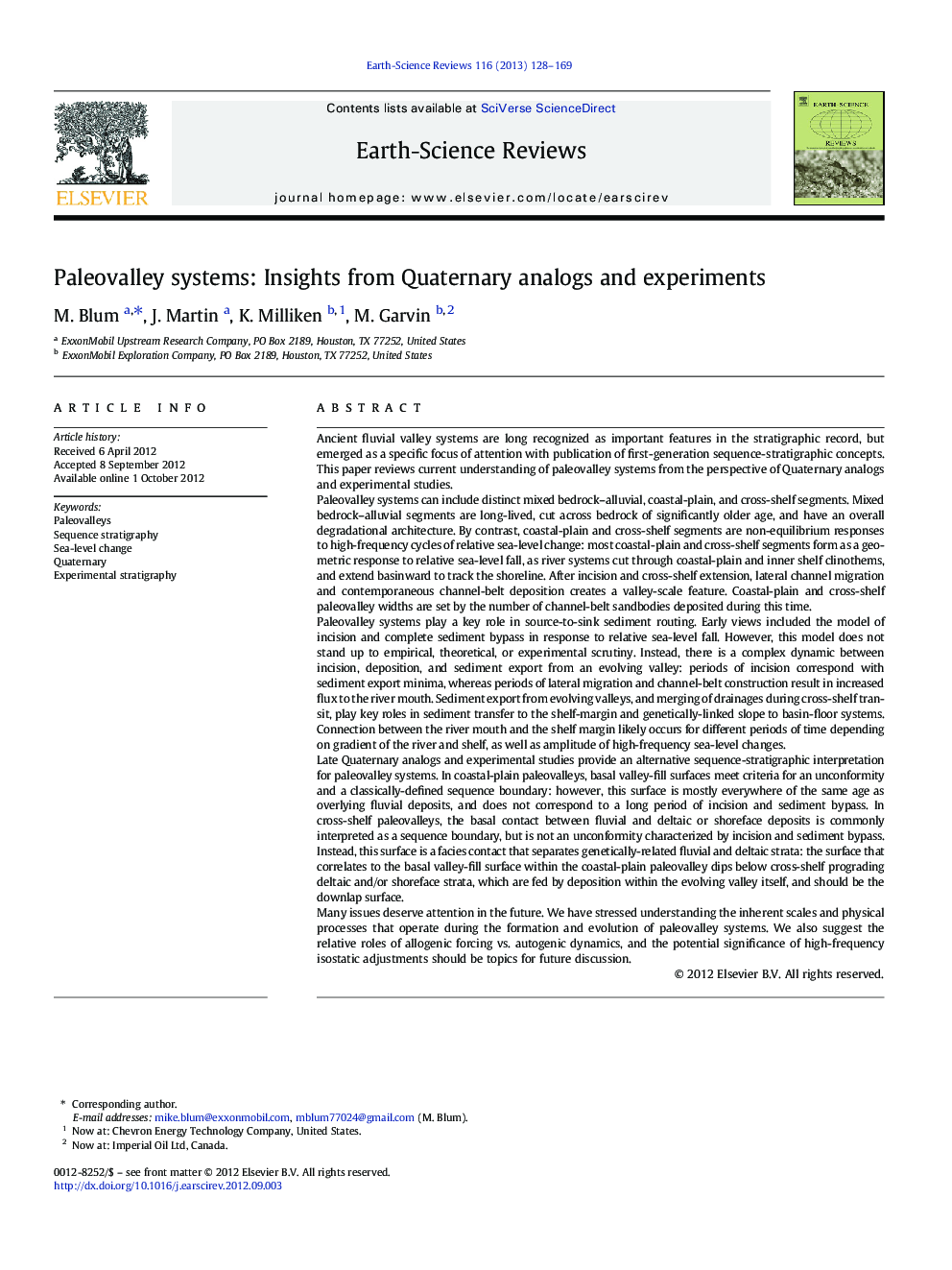| Article ID | Journal | Published Year | Pages | File Type |
|---|---|---|---|---|
| 4725880 | Earth-Science Reviews | 2013 | 42 Pages |
Ancient fluvial valley systems are long recognized as important features in the stratigraphic record, but emerged as a specific focus of attention with publication of first-generation sequence-stratigraphic concepts. This paper reviews current understanding of paleovalley systems from the perspective of Quaternary analogs and experimental studies.Paleovalley systems can include distinct mixed bedrock–alluvial, coastal-plain, and cross-shelf segments. Mixed bedrock–alluvial segments are long-lived, cut across bedrock of significantly older age, and have an overall degradational architecture. By contrast, coastal-plain and cross-shelf segments are non-equilibrium responses to high-frequency cycles of relative sea-level change: most coastal-plain and cross-shelf segments form as a geometric response to relative sea-level fall, as river systems cut through coastal-plain and inner shelf clinothems, and extend basinward to track the shoreline. After incision and cross-shelf extension, lateral channel migration and contemporaneous channel-belt deposition creates a valley-scale feature. Coastal-plain and cross-shelf paleovalley widths are set by the number of channel-belt sandbodies deposited during this time.Paleovalley systems play a key role in source-to-sink sediment routing. Early views included the model of incision and complete sediment bypass in response to relative sea-level fall. However, this model does not stand up to empirical, theoretical, or experimental scrutiny. Instead, there is a complex dynamic between incision, deposition, and sediment export from an evolving valley: periods of incision correspond with sediment export minima, whereas periods of lateral migration and channel-belt construction result in increased flux to the river mouth. Sediment export from evolving valleys, and merging of drainages during cross-shelf transit, play key roles in sediment transfer to the shelf-margin and genetically-linked slope to basin-floor systems. Connection between the river mouth and the shelf margin likely occurs for different periods of time depending on gradient of the river and shelf, as well as amplitude of high-frequency sea-level changes.Late Quaternary analogs and experimental studies provide an alternative sequence-stratigraphic interpretation for paleovalley systems. In coastal-plain paleovalleys, basal valley-fill surfaces meet criteria for an unconformity and a classically-defined sequence boundary: however, this surface is mostly everywhere of the same age as overlying fluvial deposits, and does not correspond to a long period of incision and sediment bypass. In cross-shelf paleovalleys, the basal contact between fluvial and deltaic or shoreface deposits is commonly interpreted as a sequence boundary, but is not an unconformity characterized by incision and sediment bypass. Instead, this surface is a facies contact that separates genetically-related fluvial and deltaic strata: the surface that correlates to the basal valley-fill surface within the coastal-plain paleovalley dips below cross-shelf prograding deltaic and/or shoreface strata, which are fed by deposition within the evolving valley itself, and should be the downlap surface.Many issues deserve attention in the future. We have stressed understanding the inherent scales and physical processes that operate during the formation and evolution of paleovalley systems. We also suggest the relative roles of allogenic forcing vs. autogenic dynamics, and the potential significance of high-frequency isostatic adjustments should be topics for future discussion.
► Quaternary systems and experiments provide an alternative to traditional views on paleovalley systems. ► Paleovalleys are non-equilibrium responses to high-frequency sea-level change. ► Paleovalley scales are set by fluvial deposition during relative sea-level fall. ► Paleovalley evolution significantly modulates sediment delivery to deepwater. ► The role of autogenic processes in paleovalley evolution may be underappreciated.
